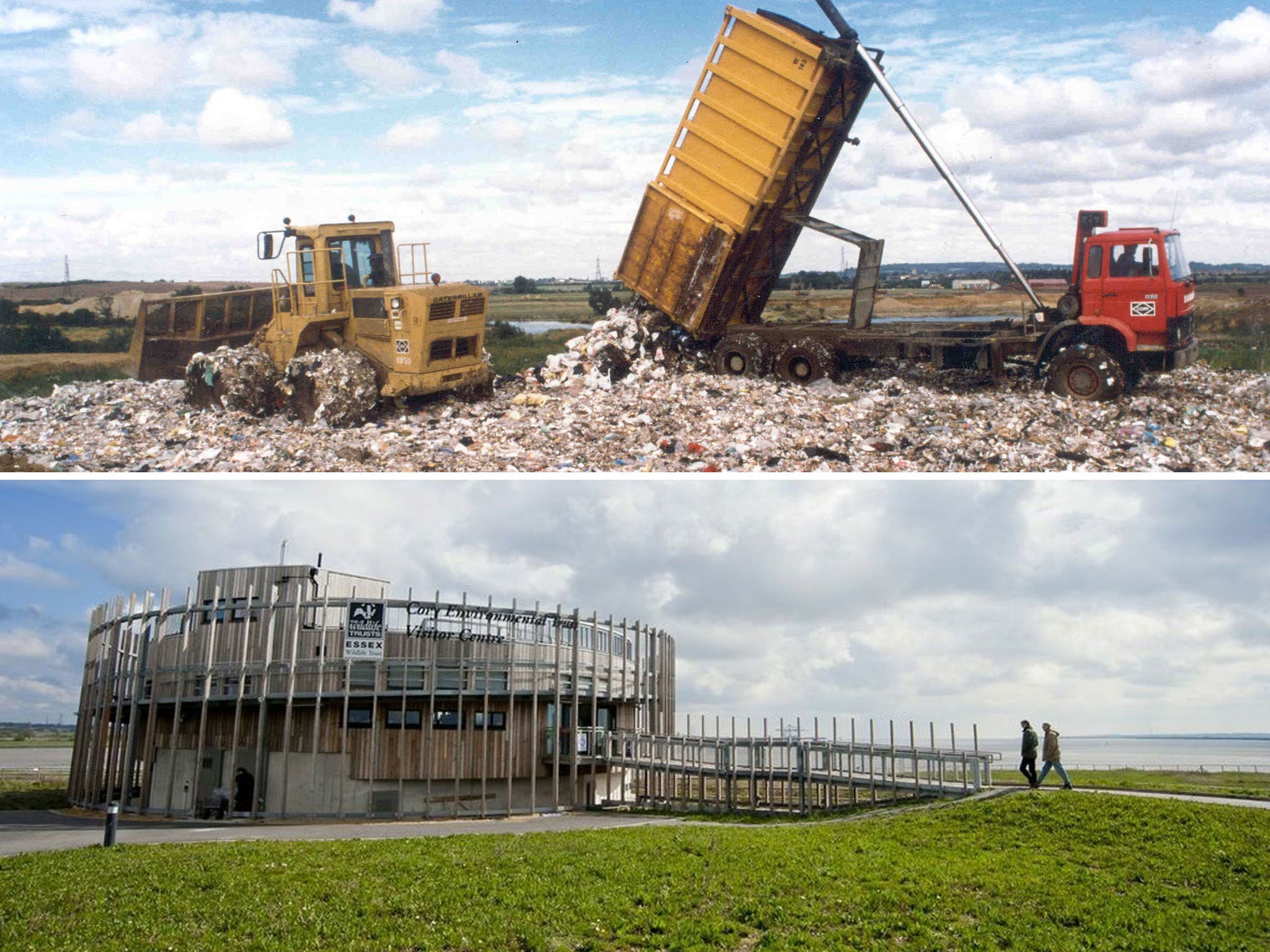Where there's Mucking, there's grass: For 50 years an old quarry was a giant rubbish dump. Now it's a thriving nature reserve

An Essex landfill site which once took 15 per cent of all London's rubbish has been ingeniously transformed into a nature reserve. The tip, full to a depth of 30 metres with the capital's garbage, was first covered with earth and then turned into grassland. Here, and in adjacent wetland and wooded areas, hundreds of rare species now thrive.
Instead of the drone of machinery bringing in tons of detritus there is the song of skylarks. In place of the whine of the ubiquitous gulls, there are barn owls, little owls and short-eared owls, waders, cuckoos, and the melodies of nightingales. And where there was only the sight and smell of fermenting rubbish, there are orchids and the rare bees that sip from their flowers. Water voles are here in numbers, too, plus slow-worms, common lizards and an estimated 500 adders.
Thus has the wonderfully named Mucking Landfill miraculously become the Thurrock Thameside Nature Park, and yesterday it was officially opened by Sir David Attenborough. Sir David is president emeritus of the Wildlife Trusts which, with Cory Environment, owners of the site, have created the new landscape. He said: "This is the beginning of a new chapter in the history of this part of the Thames Estuary. We live in a crowded country and we need to respect its limits to sustain us. Positive change like this must become the norm, and the Wildlife Trusts across the UK are trying to make that happen."
The change from garbage dump to nature reserve began around 20 years ago, when the Essex Wildlife Trust leased the first piece of land from Cory. The site was originally a gravel quarry which, for 50 years, was filled with daily bargefuls of rubbish. This was then capped with inert material and 65cms of sandy, gravelly clay, which became grassland. The transformation of the site stepped up considerably after the landfill closed, and, in surrounding areas, scrapes and pools were formed for wetland species. The nature park now covers 120 acres, and will eventually be expanded to 845 acres.
Mammals in the park include harvest and wood mice, field and bank voles, two species of shrew, and hares. Insects include the black-and-yellow striped wasp spider, the shrill carder bee (one of our smallest bumblebees), and butterflies seen so far this season include the orange-tip, holly blue and green-veined white.
Not the least of the park's remarkable sights is the Cory Environmental Trust Visitor Centre. Built on top of the landfill, it has – to allow for settlement of the rubbish beneath – hydraulic jacks installed at two dozen points so it can be lifted or lowered according to what is happening underneath it.
The Thurrock site is one of a number of Wildlife Trust sites that have been reclaimed from industrial use. Parc Slip in Glamorgan, for example, is a former coal mine; and in Lancashire there is a nature reserve on what was once the biggest iron and steelworks in Europe.
Join our commenting forum
Join thought-provoking conversations, follow other Independent readers and see their replies
Comments